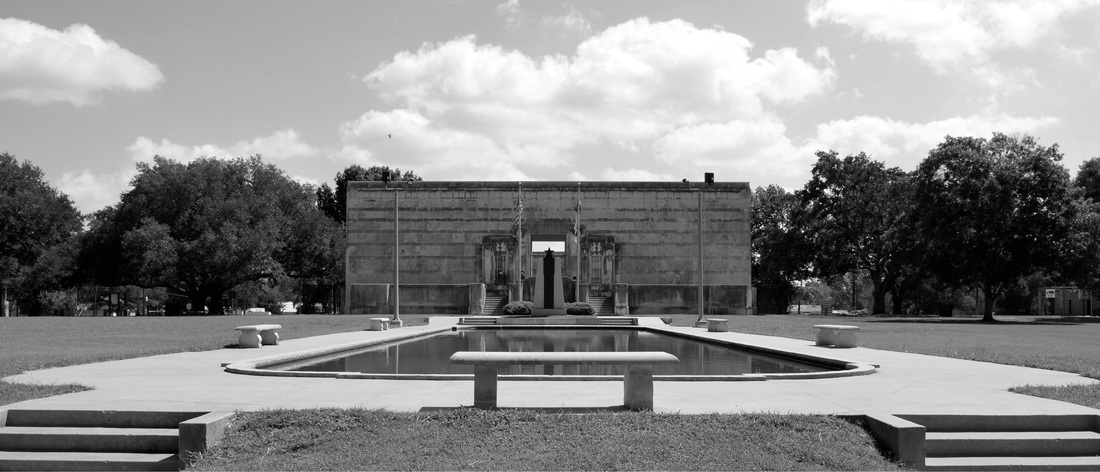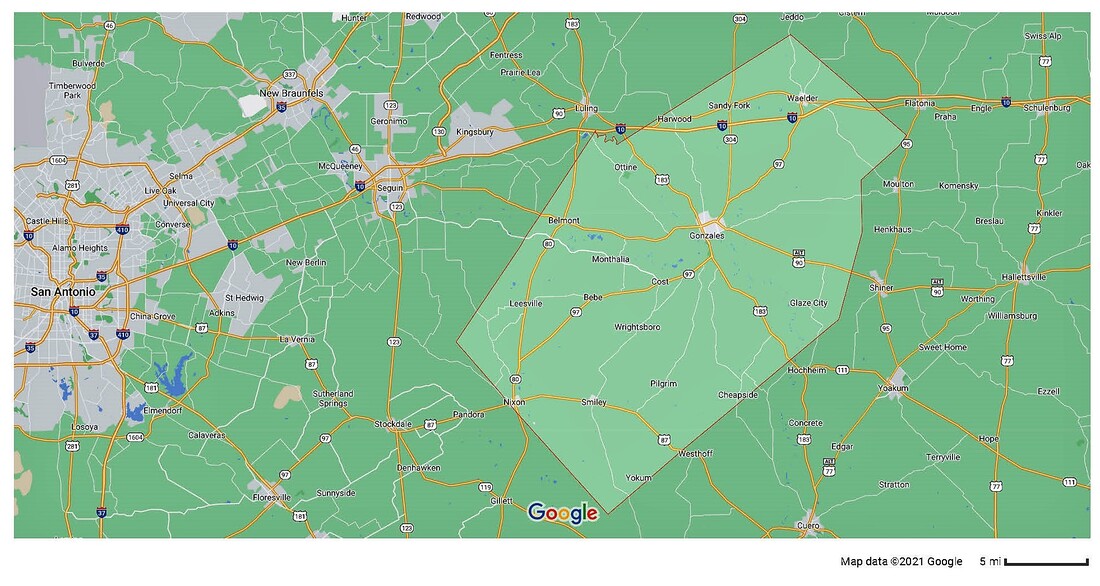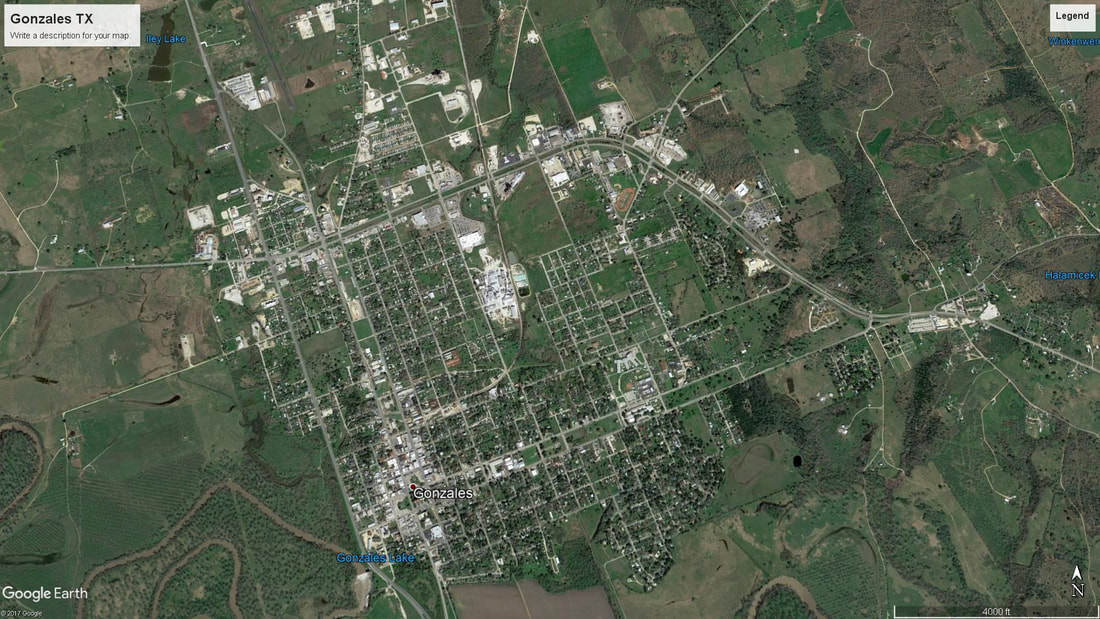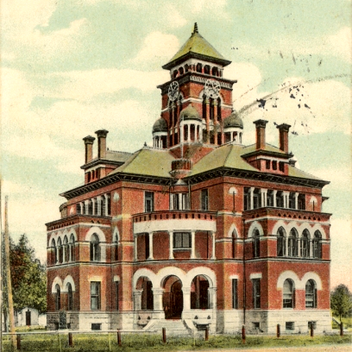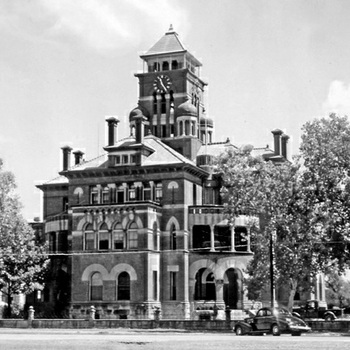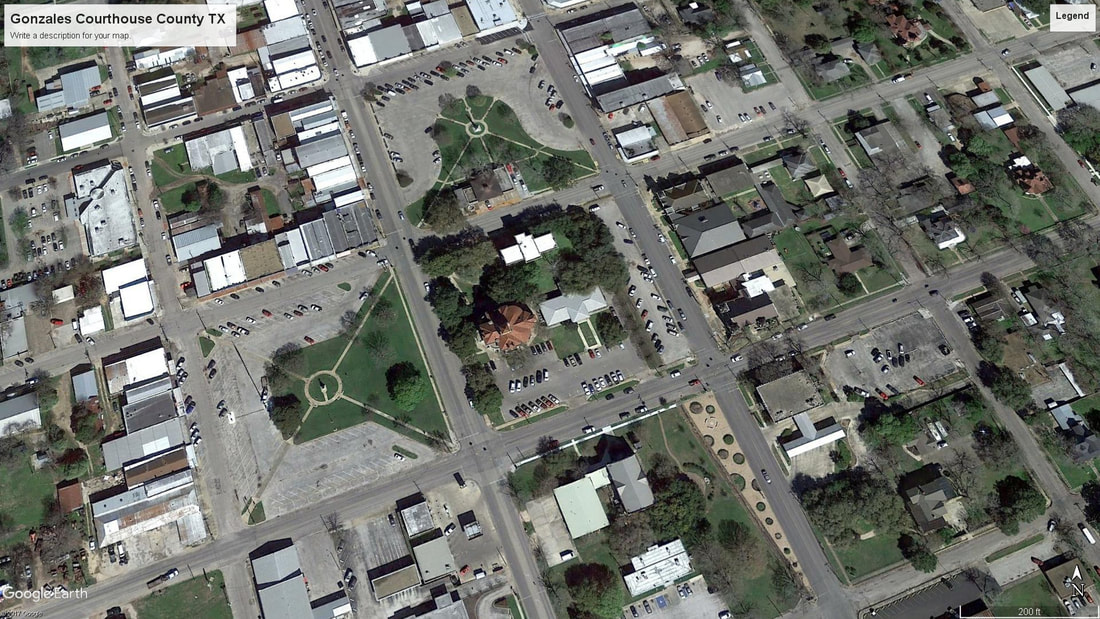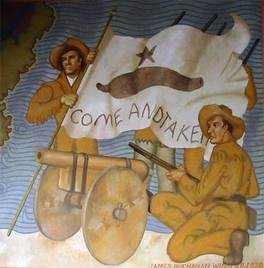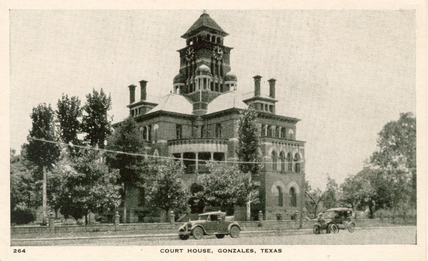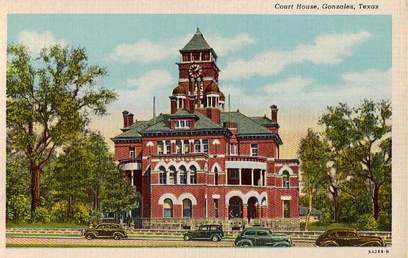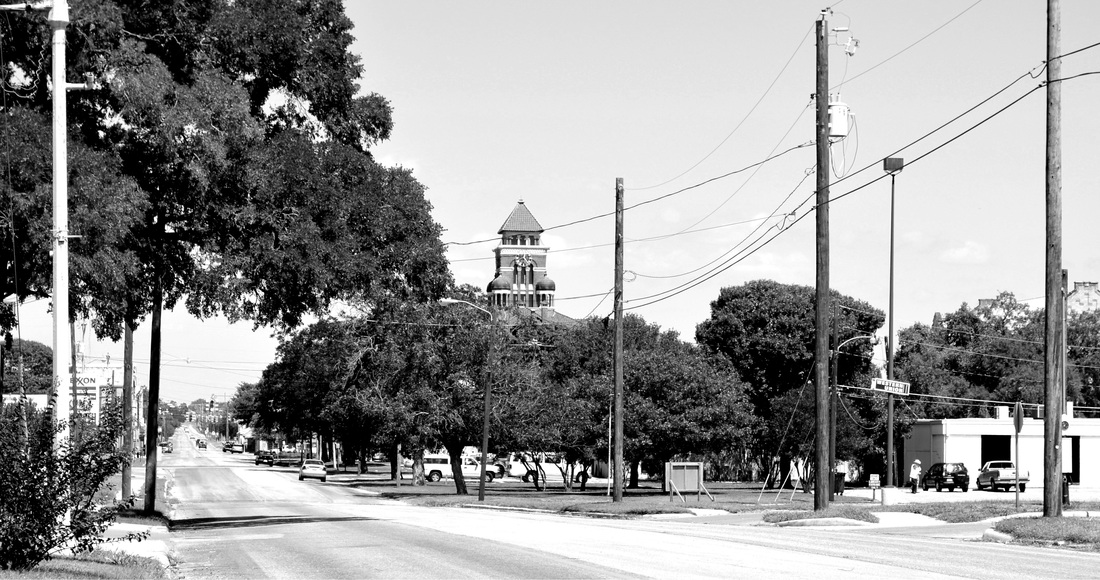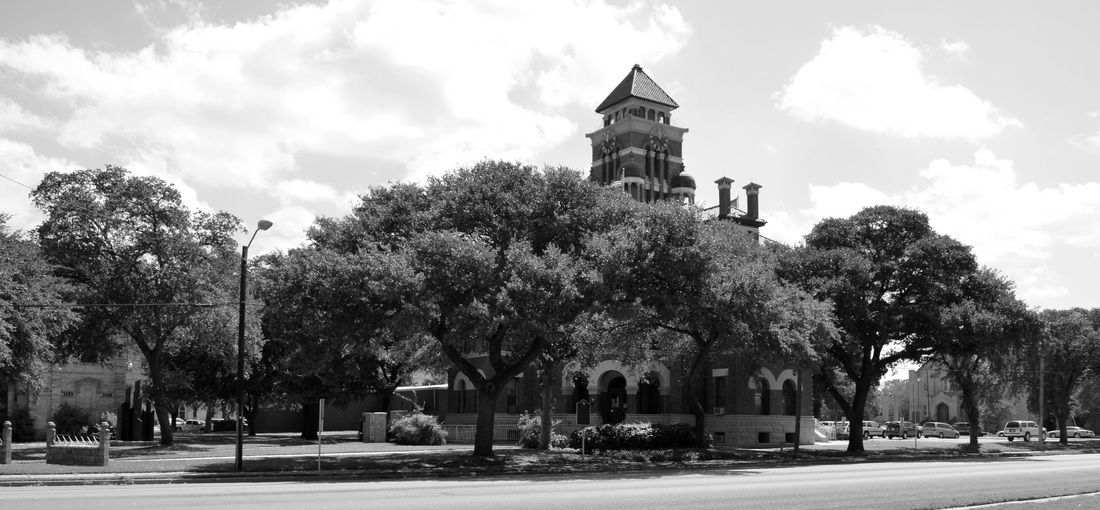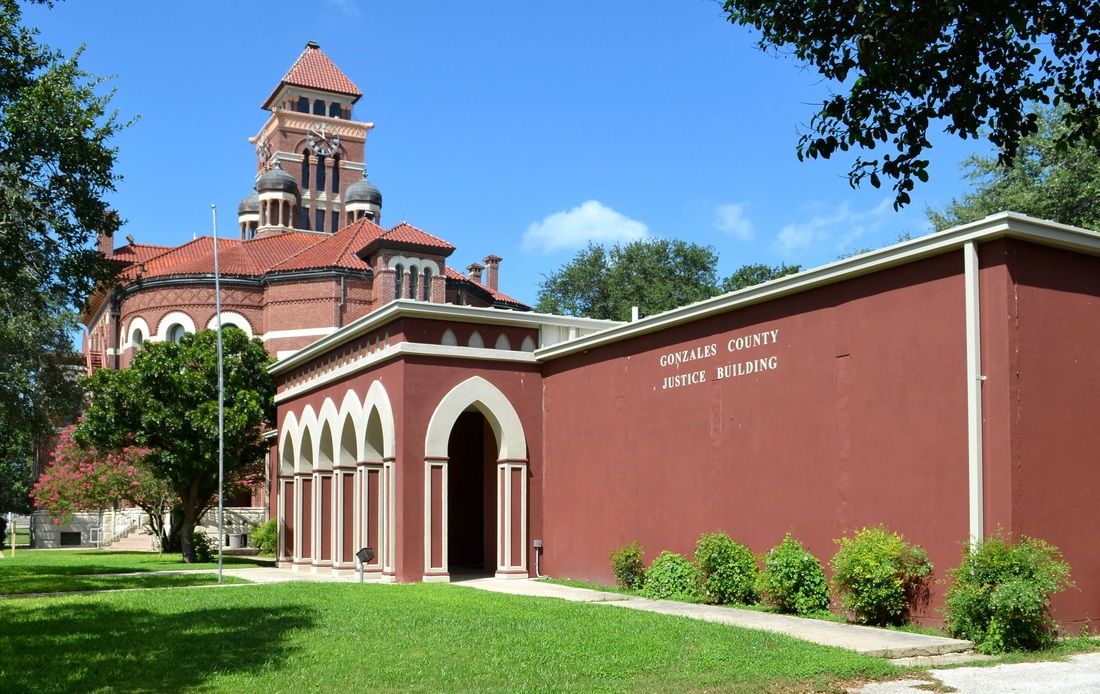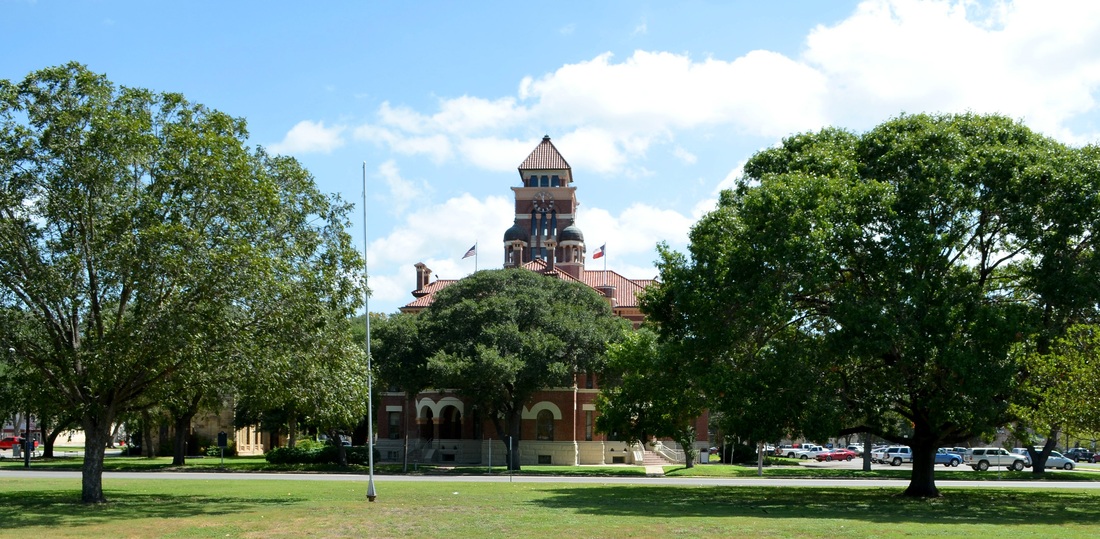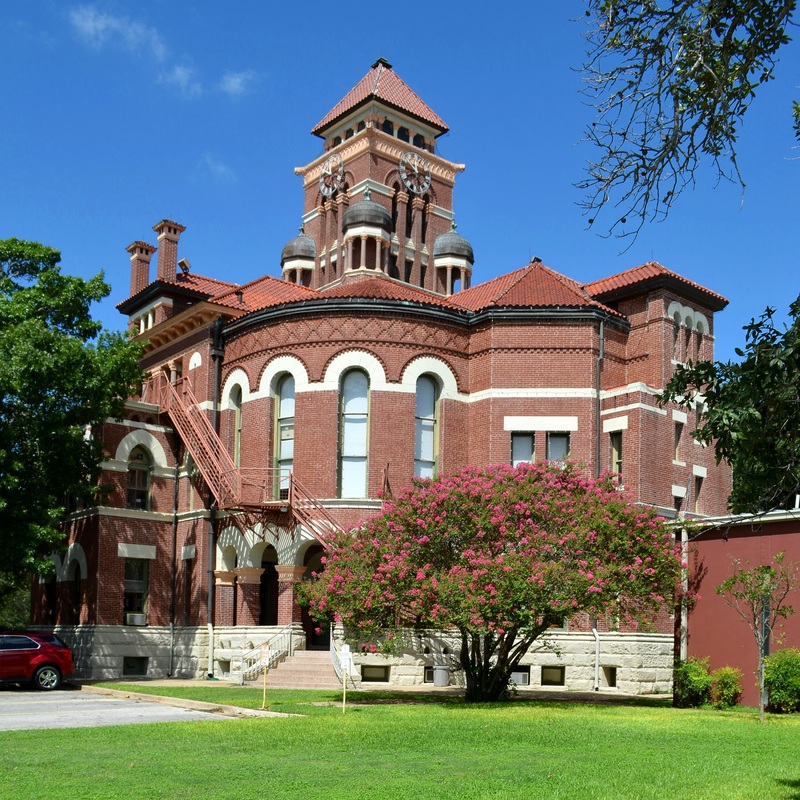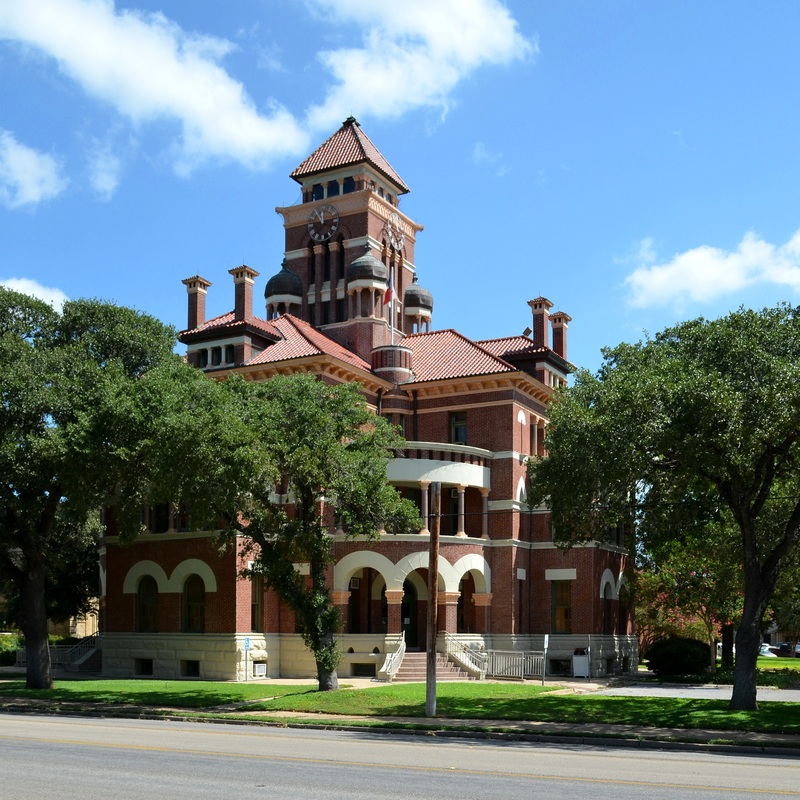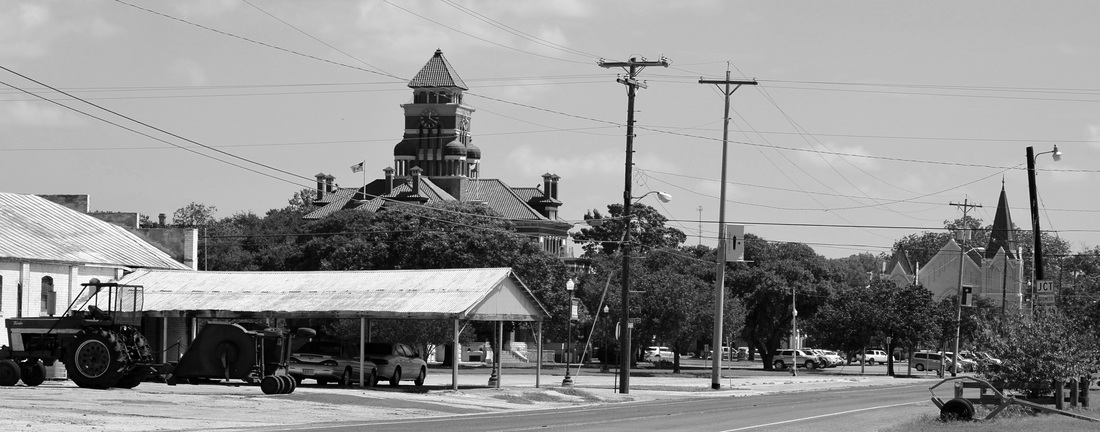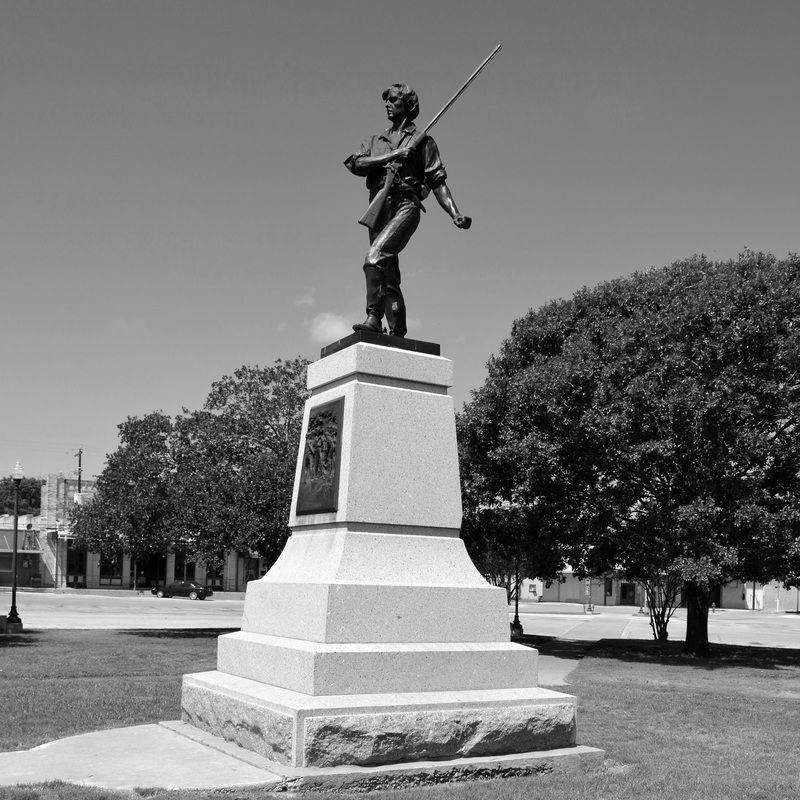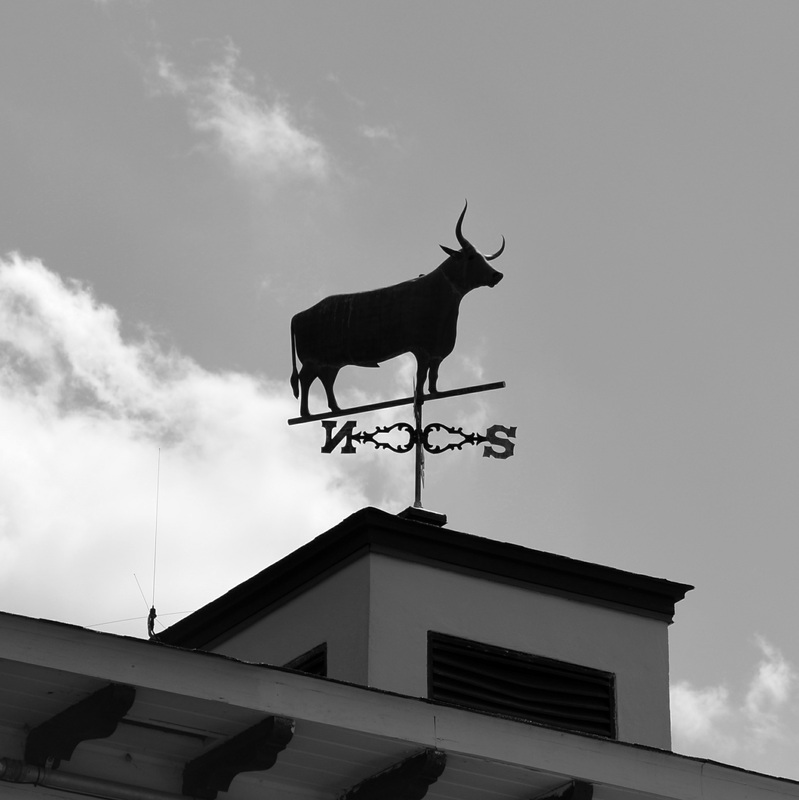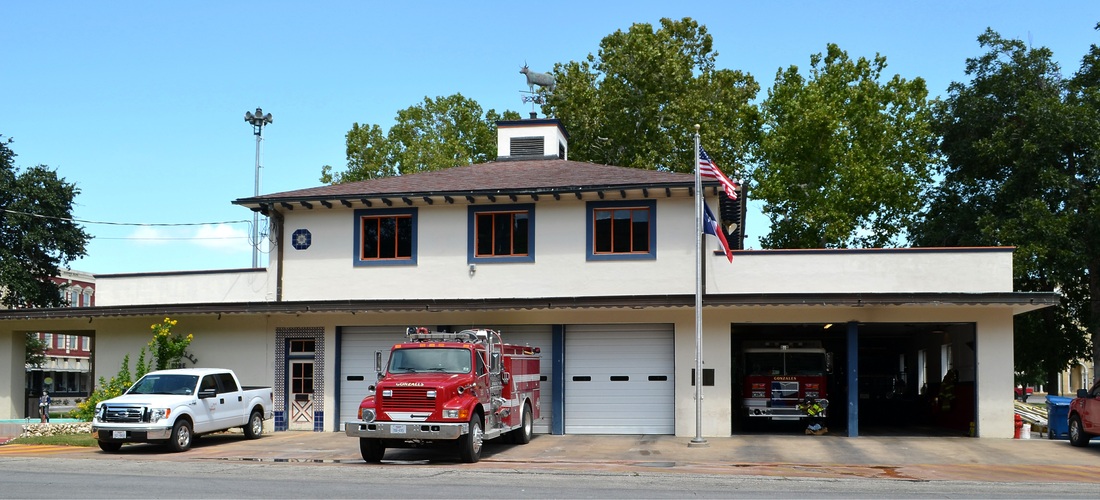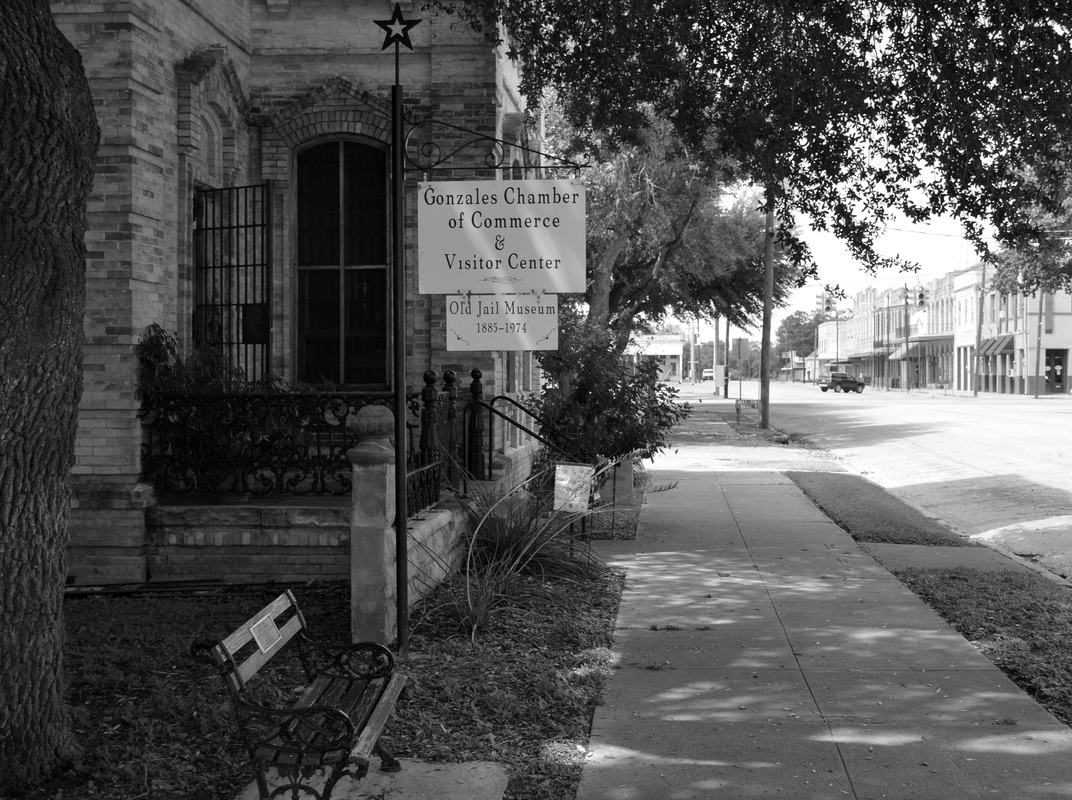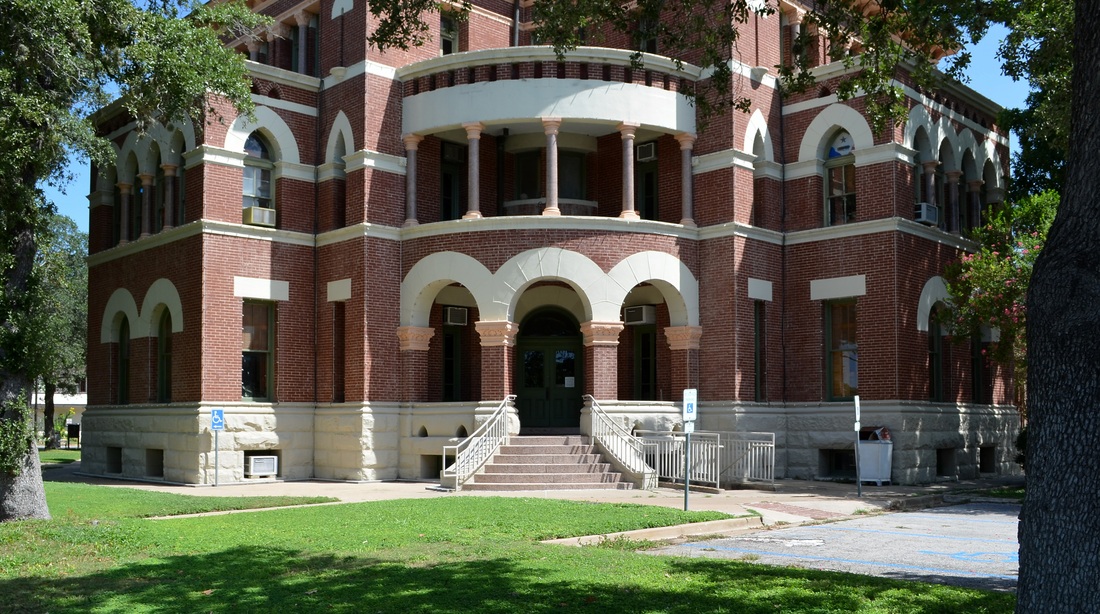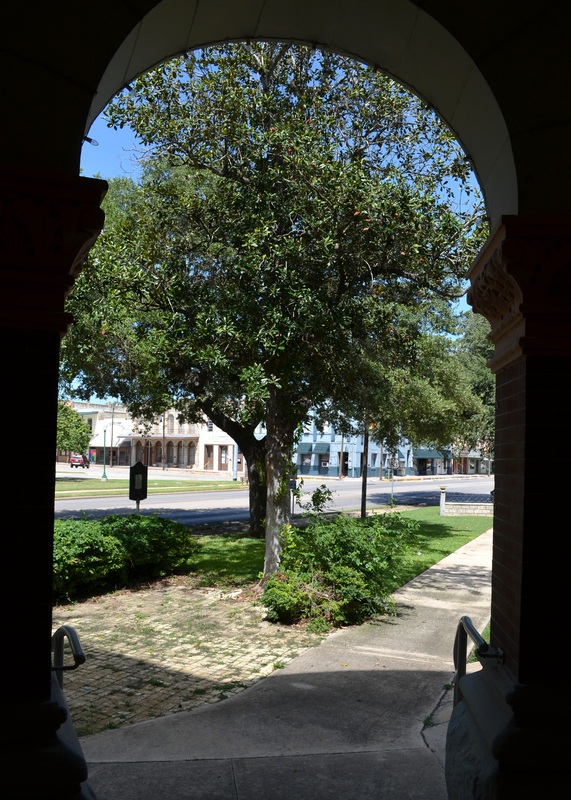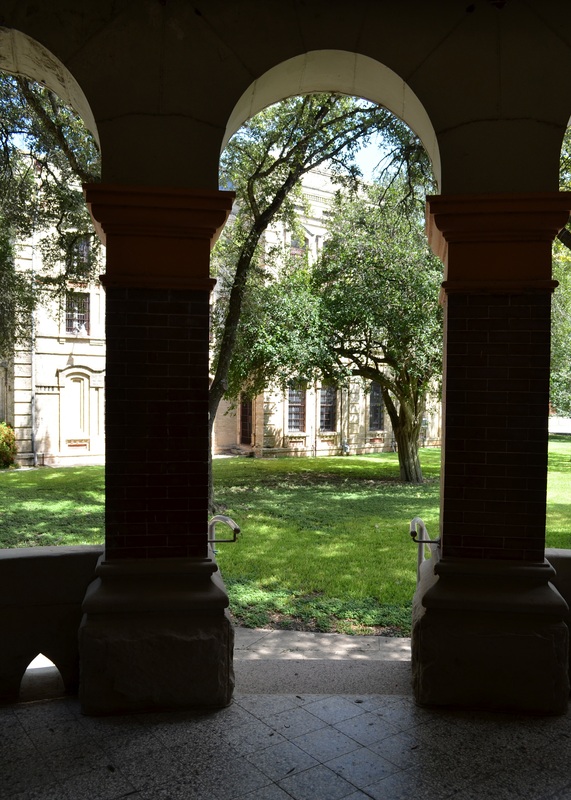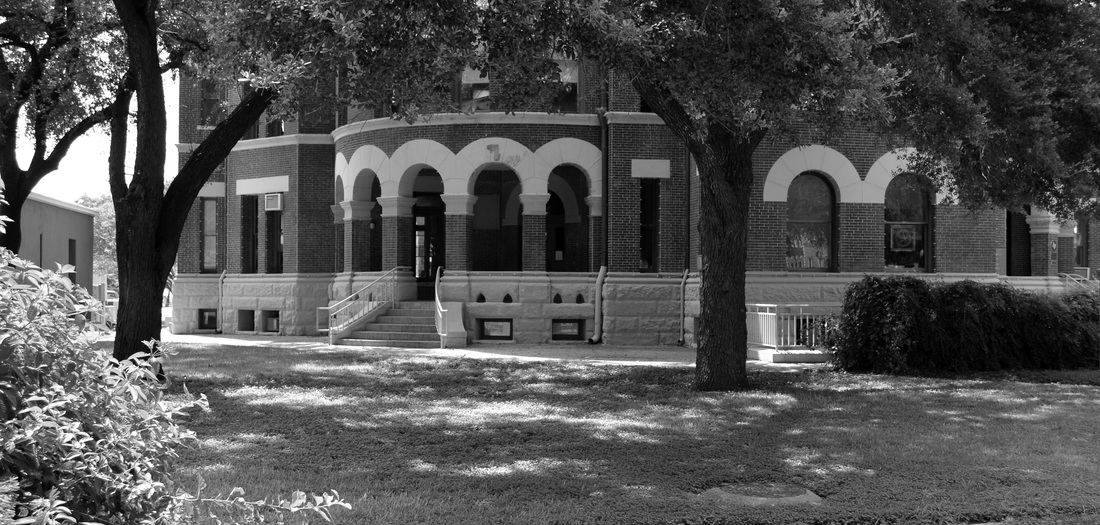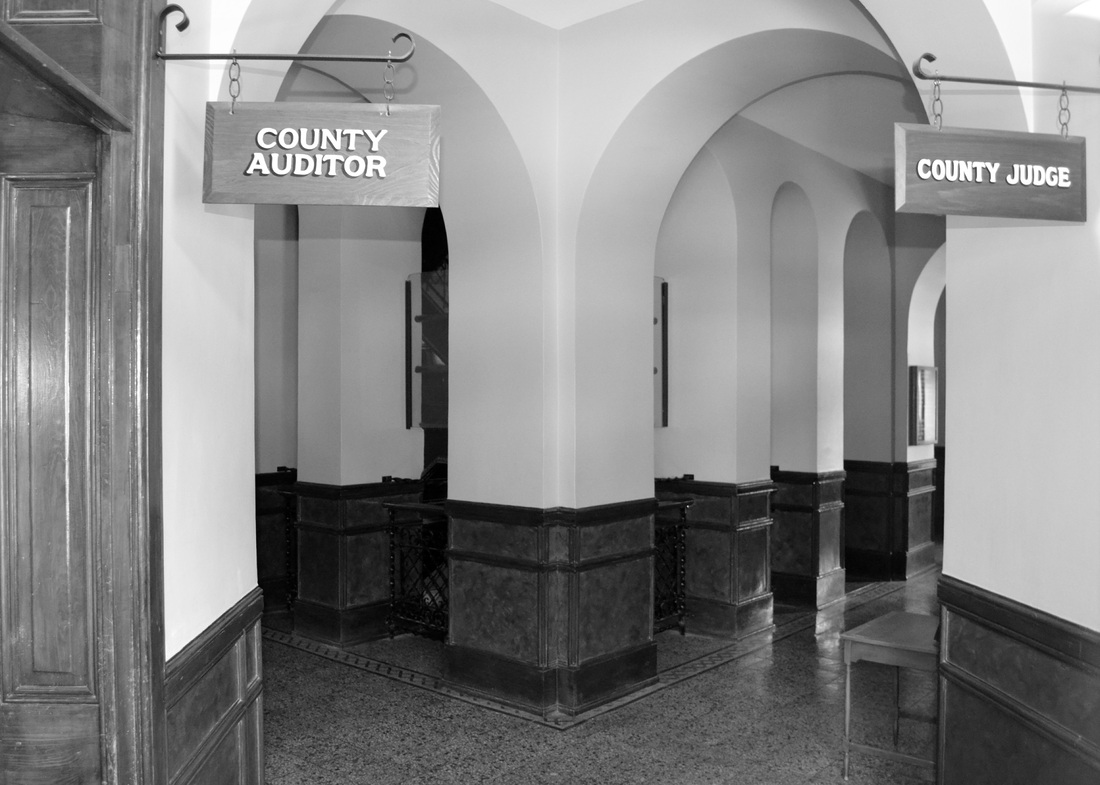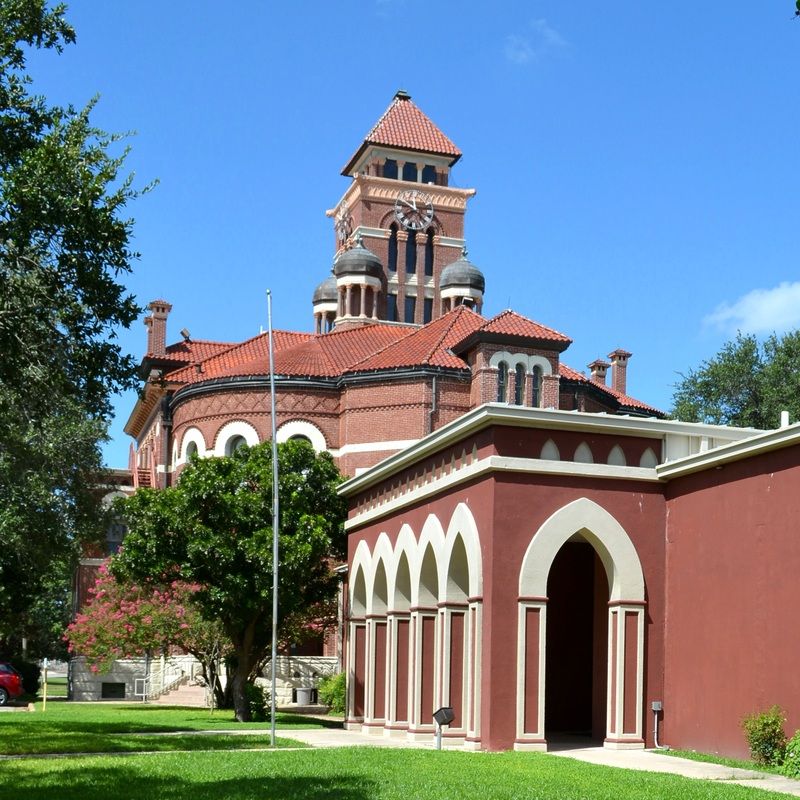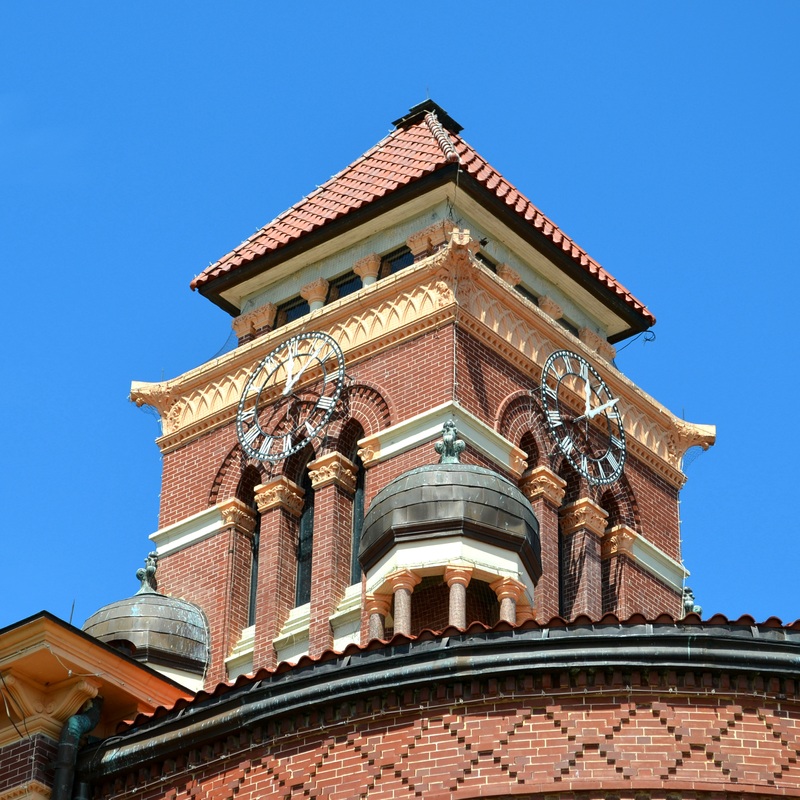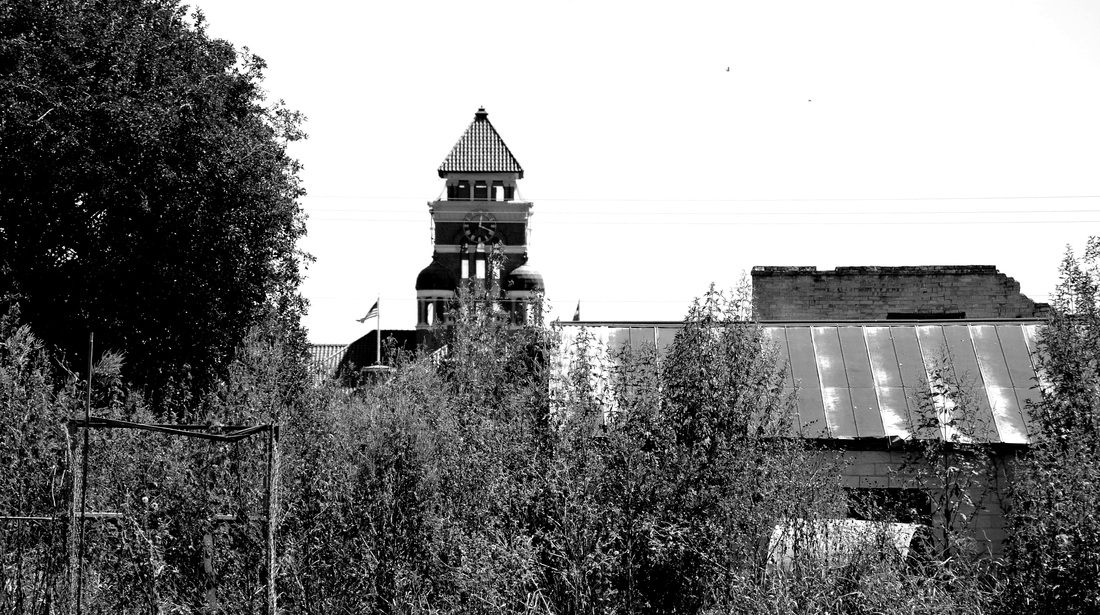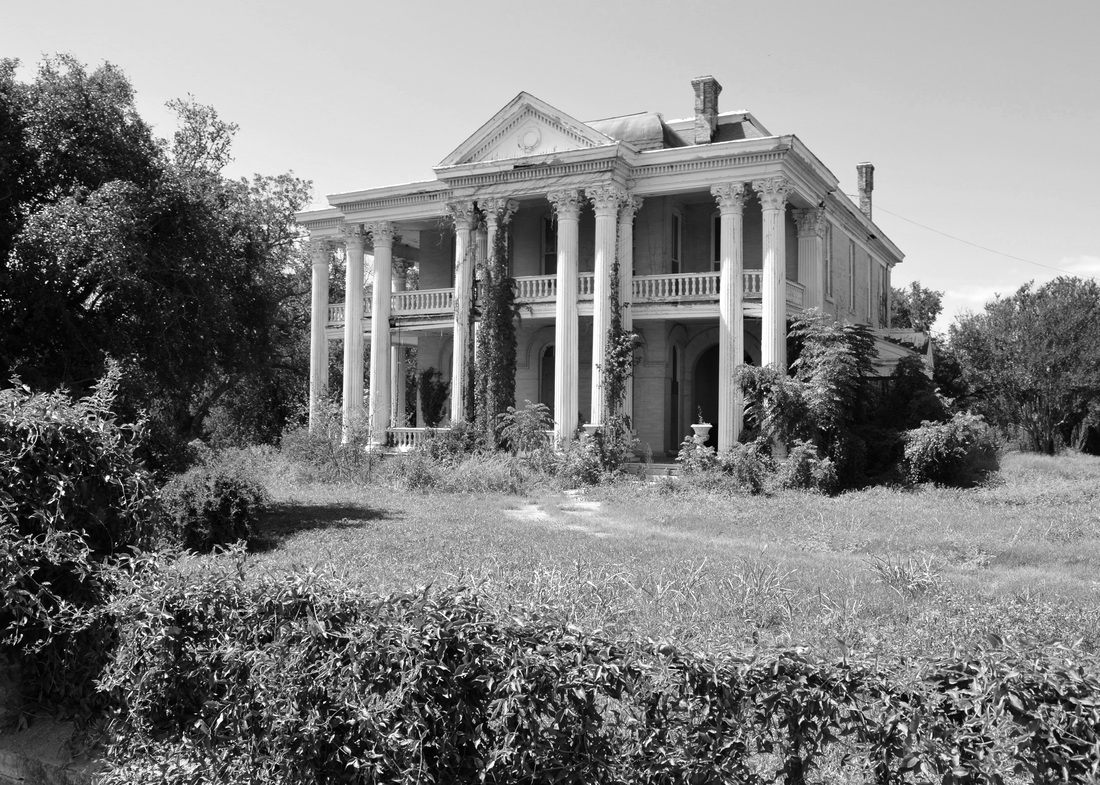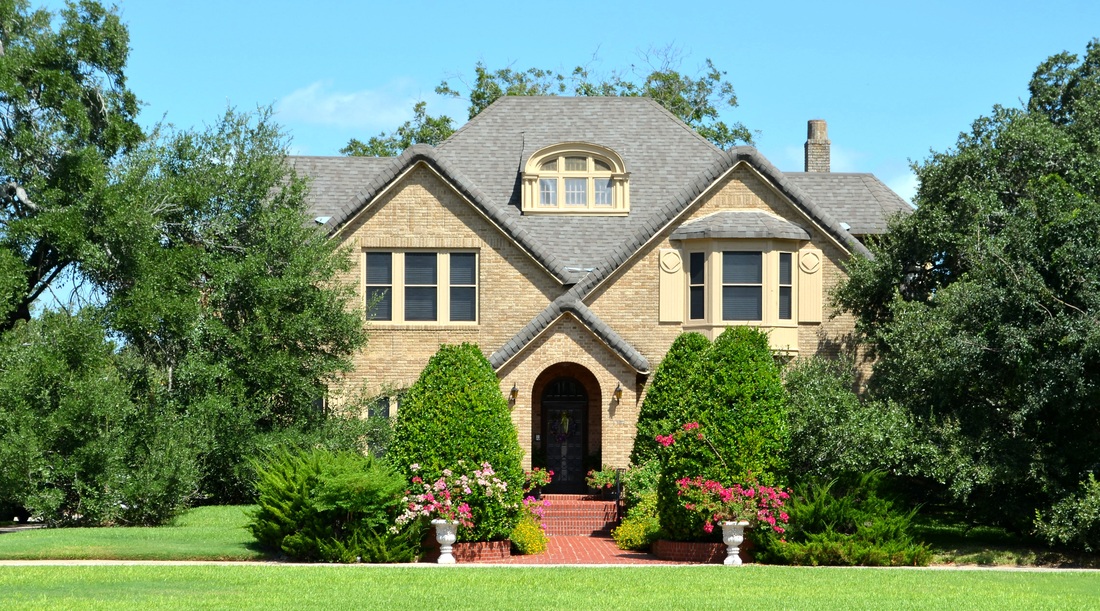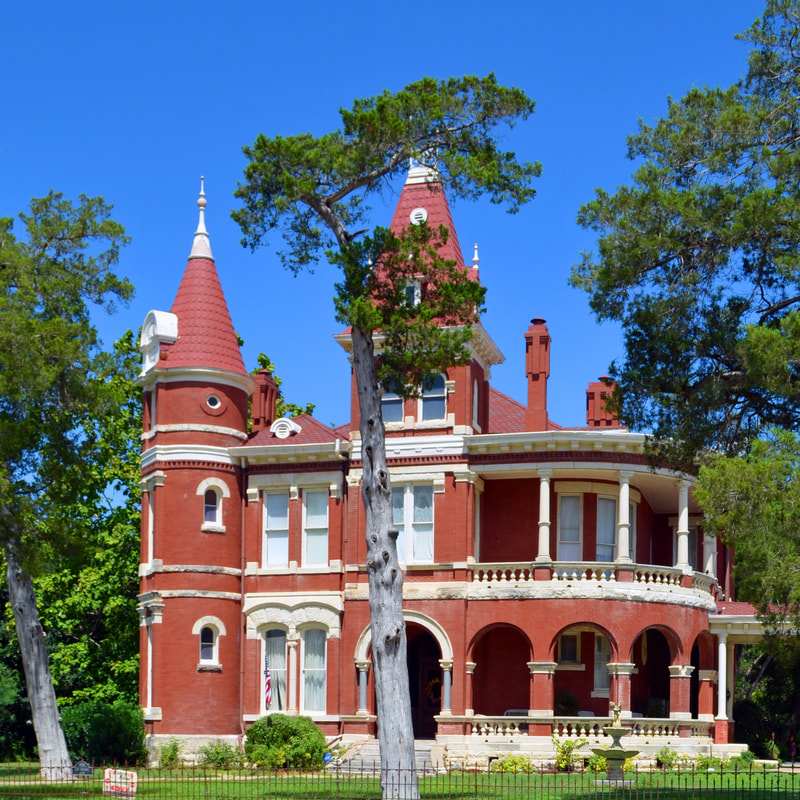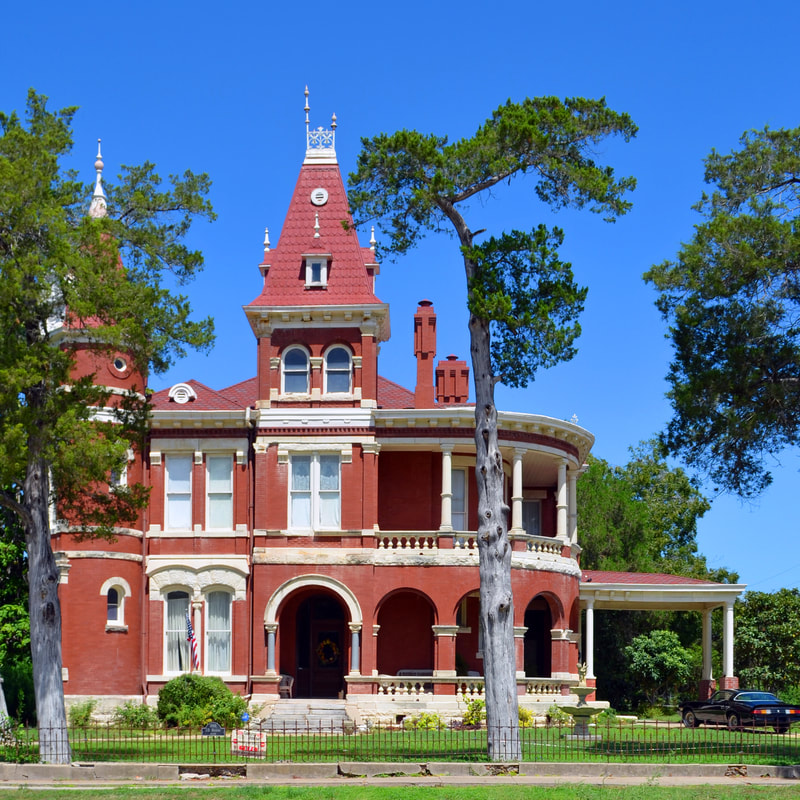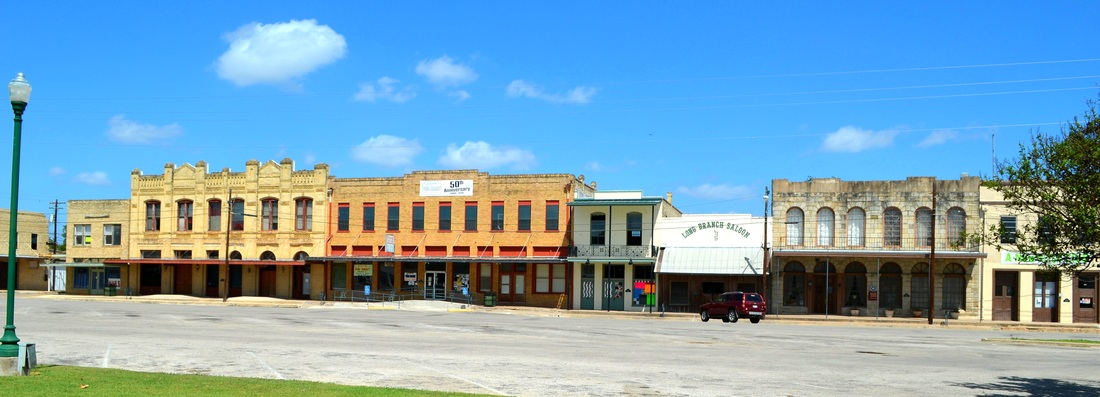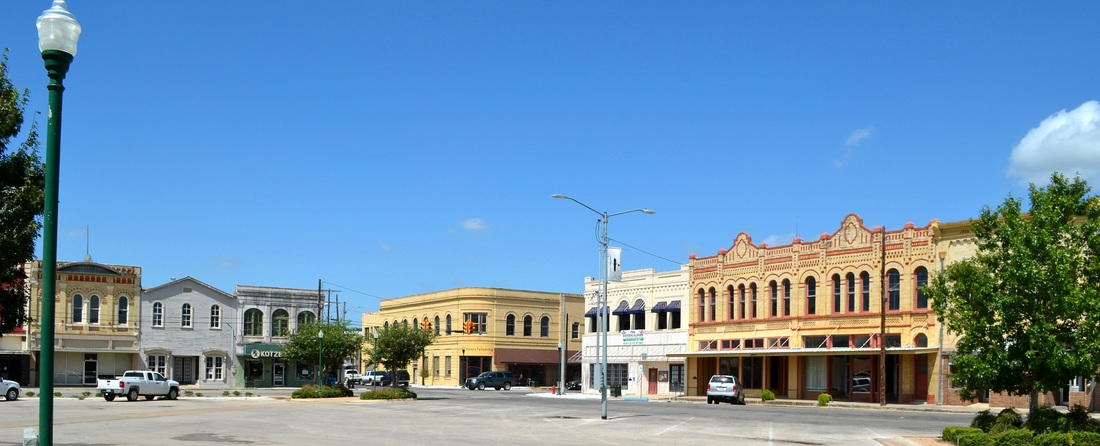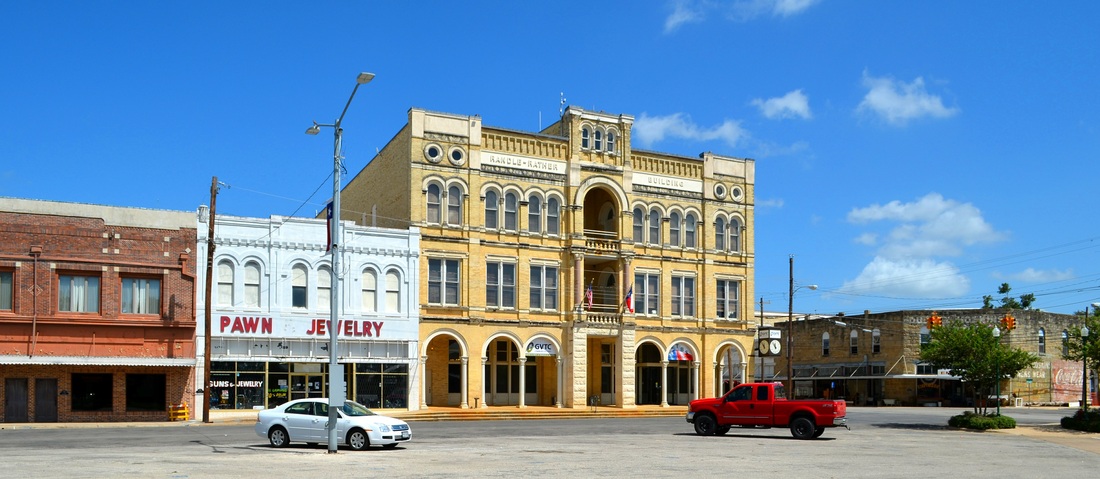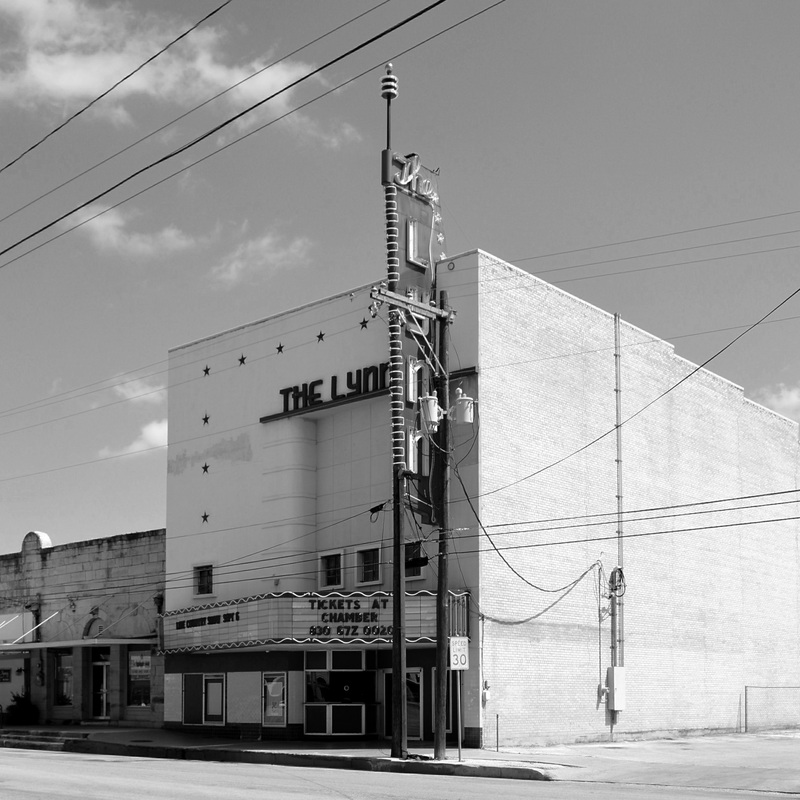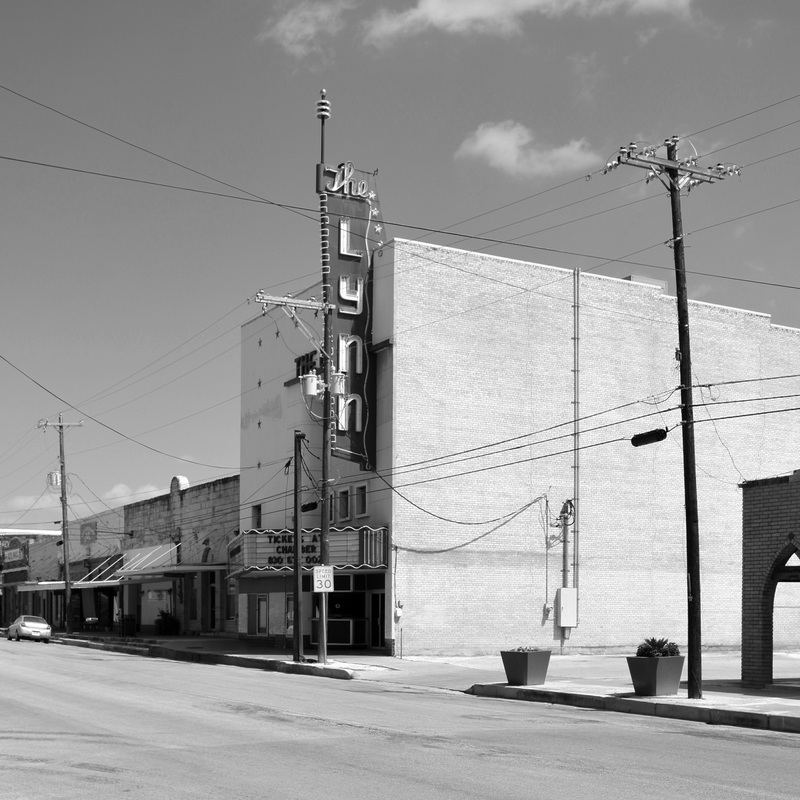013 of 254 Gonzales County Courthouse, Gonzales, Texas. County Population: 19,807
"Come and Take It"
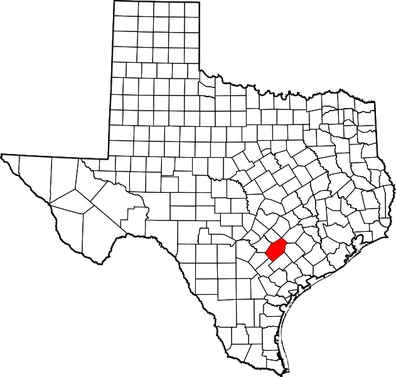
Gonzales County, Texas
Gonzales is one of the earliest Anglo-American settlements in Texas, the first west of the Colorado River. It was established by Empresario Green DeWitt as the capital of his colony in August 1825. He named it for Rafael Gonzales, governor of Coahuila y Tejas.
"Gonzales is most famous as the "Lexington of Texas" because it was the site of the first skirmish of the Texas Revolution. In 1831, the Mexican government gave the settlers a small cannon for protection against Indian attacks. At the outbreak of settler hostilities, a contingent of Mexican soldiers was sent from San Antonio to retrieve the cannon. On 2 October 1835, Texans under the command of John H. Moore confronted them. The Texans had fashioned a flag with the words "Come and take it". The Texans successfully resisted the federal troops in what became known as the Battle of Gonzales.
"Gonzales County, named for the capital of Green DeWitt's colony, was established
in 1836 and organized in 1837 as one of the original counties in the Republic of Texas. It occupied the same area as DeWitt's colony-a territory some sixty miles long and twenty-five miles wide, with an area of 1,100 square miles. After the annexation of Texas to the United States in 1845, portions of Gonzales County were detached to form what are now the counties of Caldwell, Comal, DeWitt, Fayette, Guadalupe, Jackson, Lavaca, and Victoria."
Dorcas Huff Baumgartner and Genevieve B. Vollentine, "GONZALES COUNTY," Handbook of Texas Online
"Gonzales is most famous as the "Lexington of Texas" because it was the site of the first skirmish of the Texas Revolution. In 1831, the Mexican government gave the settlers a small cannon for protection against Indian attacks. At the outbreak of settler hostilities, a contingent of Mexican soldiers was sent from San Antonio to retrieve the cannon. On 2 October 1835, Texans under the command of John H. Moore confronted them. The Texans had fashioned a flag with the words "Come and take it". The Texans successfully resisted the federal troops in what became known as the Battle of Gonzales.
"Gonzales County, named for the capital of Green DeWitt's colony, was established
in 1836 and organized in 1837 as one of the original counties in the Republic of Texas. It occupied the same area as DeWitt's colony-a territory some sixty miles long and twenty-five miles wide, with an area of 1,100 square miles. After the annexation of Texas to the United States in 1845, portions of Gonzales County were detached to form what are now the counties of Caldwell, Comal, DeWitt, Fayette, Guadalupe, Jackson, Lavaca, and Victoria."
Dorcas Huff Baumgartner and Genevieve B. Vollentine, "GONZALES COUNTY," Handbook of Texas Online
|
I visited Gonzales County and photographed the courthouse on June 8,2009 and September 2, 2012.
Gonzales County Courthouse: 1895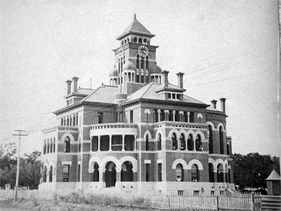 Photo courtsey of THC.
The current courthouse, dating from 1895, was designed by noted Texas architect, J. Riely Gordon in the Romanesque revival style made popular by architect H.H. Richardson. The building is cruciform in plan with four semicircular entrance bays filling in the four corners of the cross. This layout places the building entrances on a diagonal axis. Compare to the Brazoria, Comal, Ellis, Lee and Wise county court-houses. The courthouse shares the square with a jail designed by Eugene T. Heiner.
|
